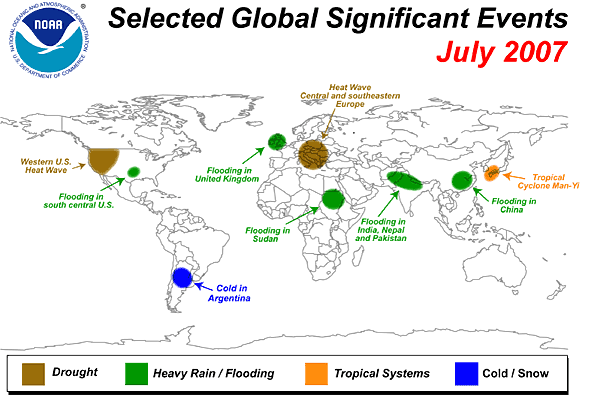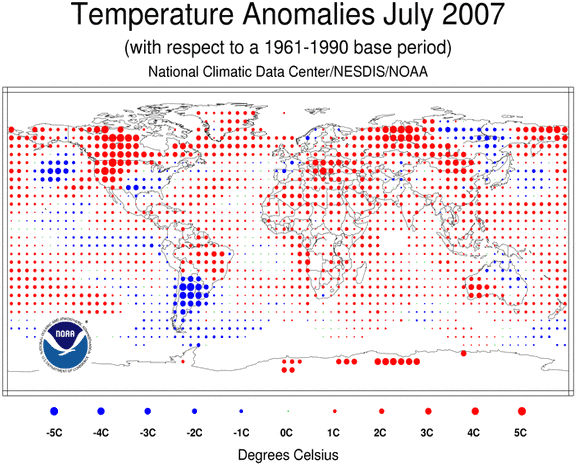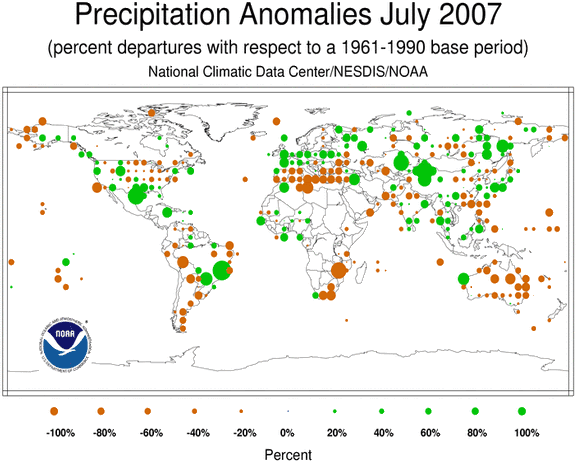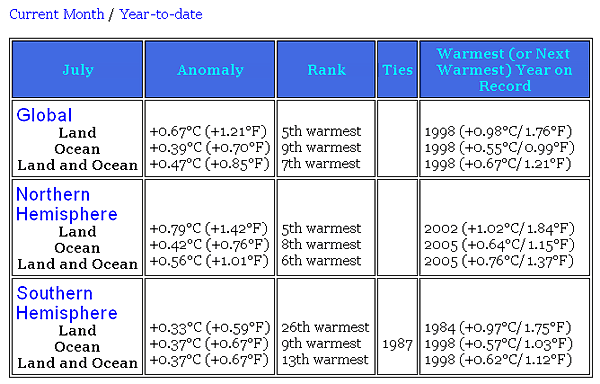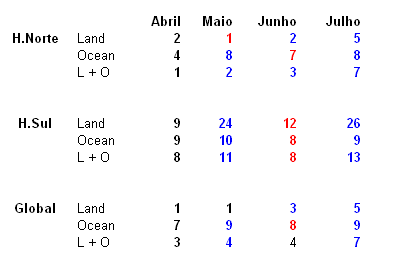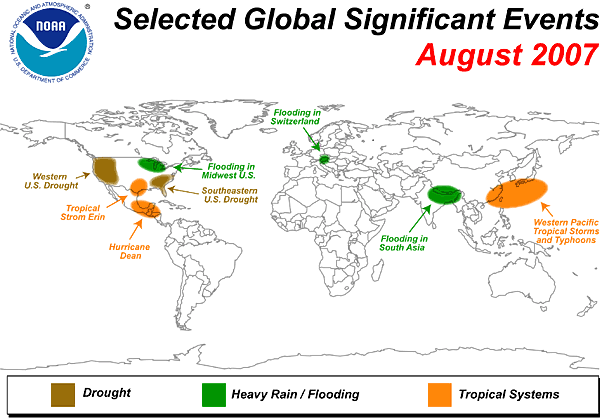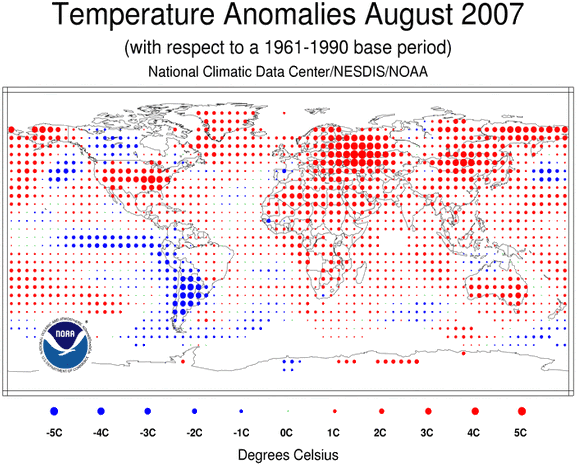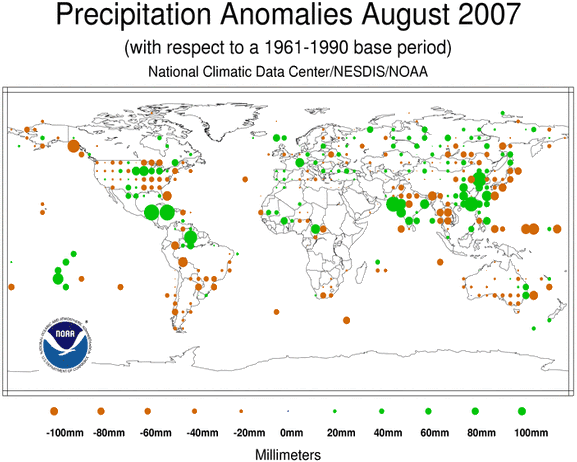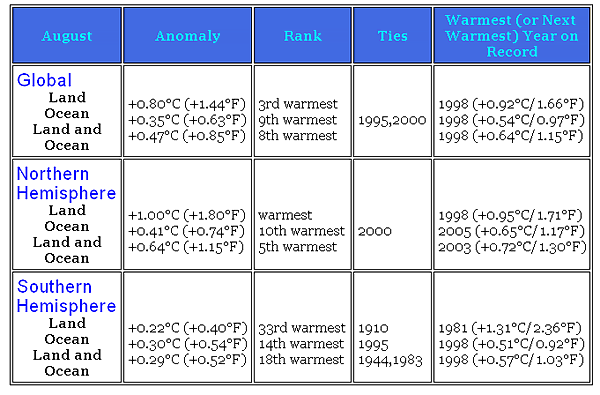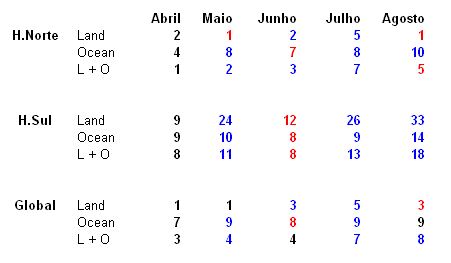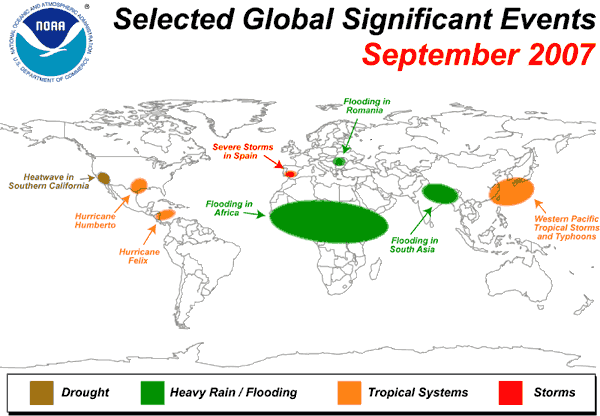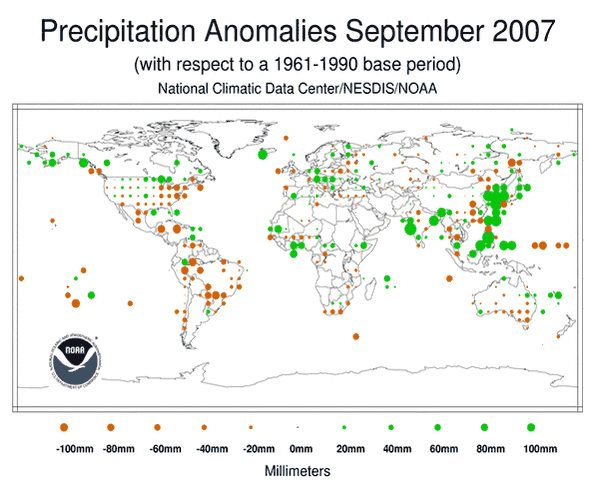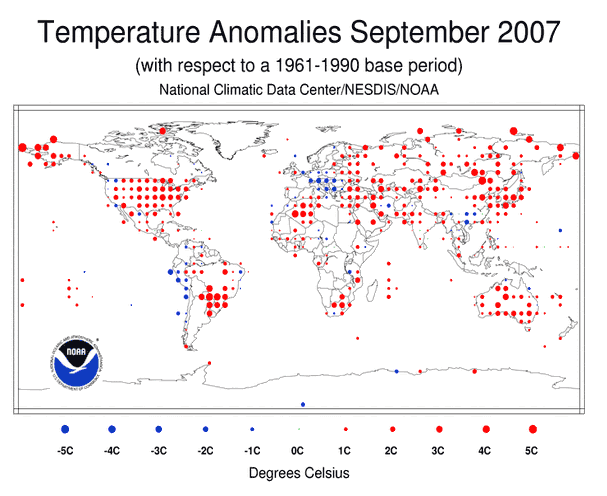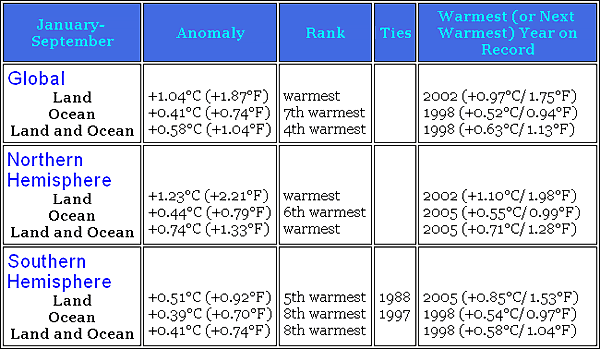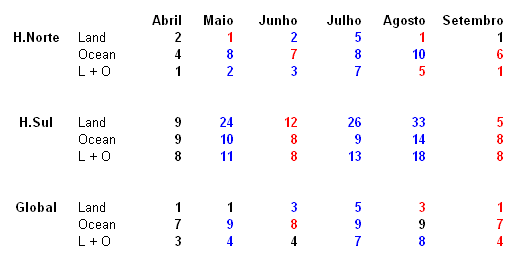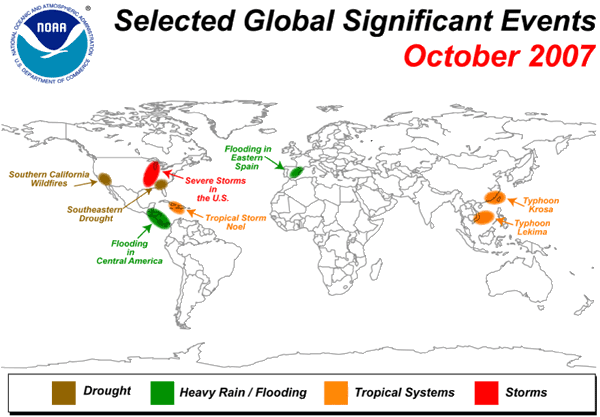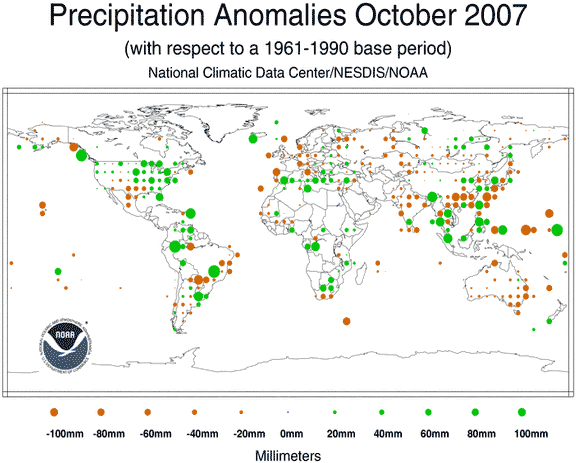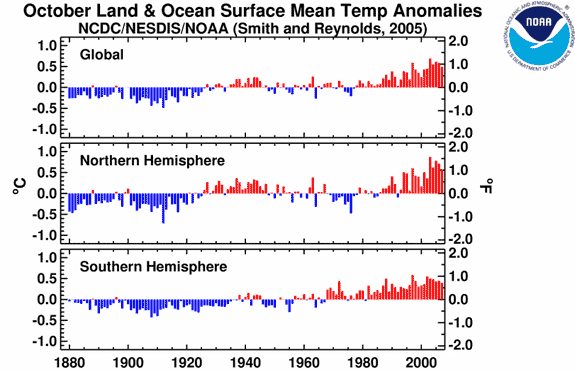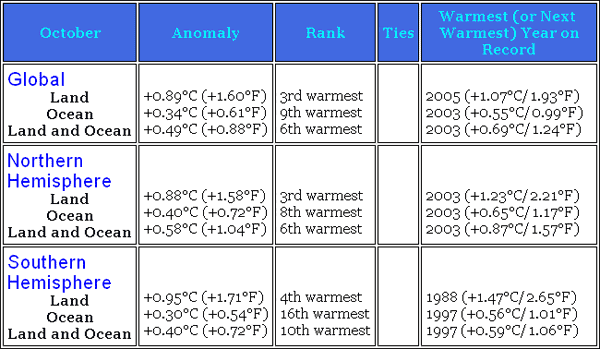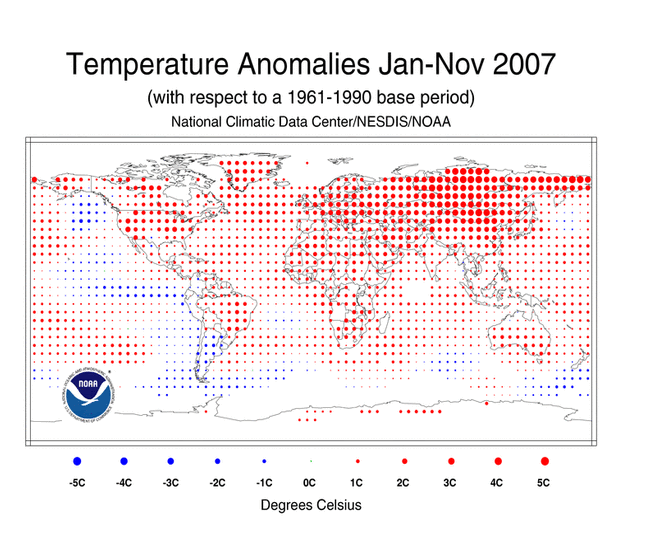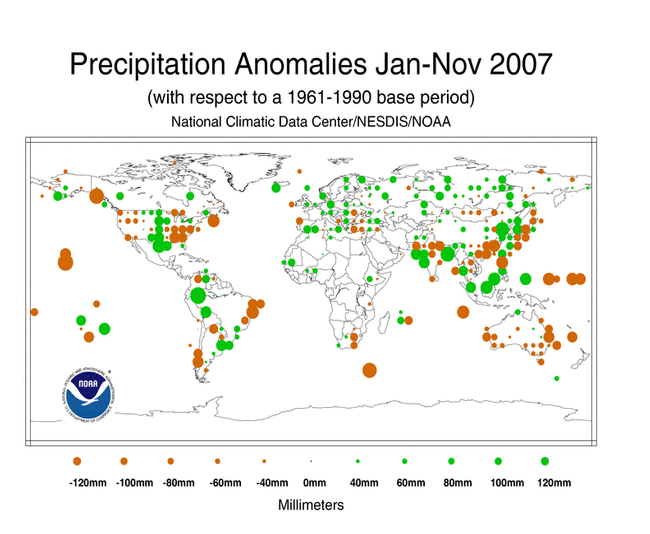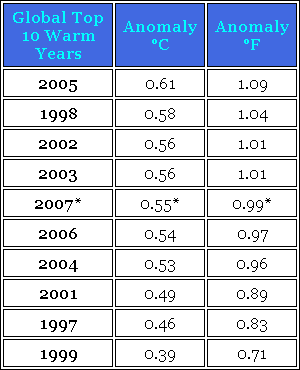Abril/2007
O National Climatic Data Center já publicou a análise do mês de Abril.
Com aquela forte e excepcional influência anti-ciclónica no centro da Europa durante boa parte do mês de Abril, não era difícil de prever o conteúdo desta análise.
Climate of 2007 - April in Historical Perspective
National Climatic Data Center 15 May 2007
Link:
http://www.ncdc.noaa.gov/oa/climate/research/2007/apr/apr07.html



Janeiro - Abril 2007

O National Climatic Data Center já publicou a análise do mês de Abril.
Com aquela forte e excepcional influência anti-ciclónica no centro da Europa durante boa parte do mês de Abril, não era difícil de prever o conteúdo desta análise.
Climate of 2007 - April in Historical Perspective
National Climatic Data Center 15 May 2007
...
Global Highlights
The combined global land and ocean surface temperature for April was the third warmest on record (1.19°F/0.66°C above the 20th century mean). For the January-April year-to-date period, the global surface temperature ranked warmest on record.
Separately, the global April land-surface temperature was the warmest on record. Monthly mean temperatures more than 5°F (3°C) above average covered large parts of Asia and Western Europe. The April ocean-surface temperature tied for seventh warmest in the 128-year period of record as neutral ENSO (El Niño-Southern Oscillation) conditions persisted in the equatorial Pacific (awaiting update to indices).
During the past century, global surface temperatures have increased at a rate near 0.11°F (0.06°C) per decade, but the rate of increase has been three times larger since 1976, or 0.32°F (0.18°C) per decade, with some of the largest temperature increases occurring in the high latitudes of the Northern Hemisphere.
Link:
http://www.ncdc.noaa.gov/oa/climate/research/2007/apr/apr07.html



Janeiro - Abril 2007
















